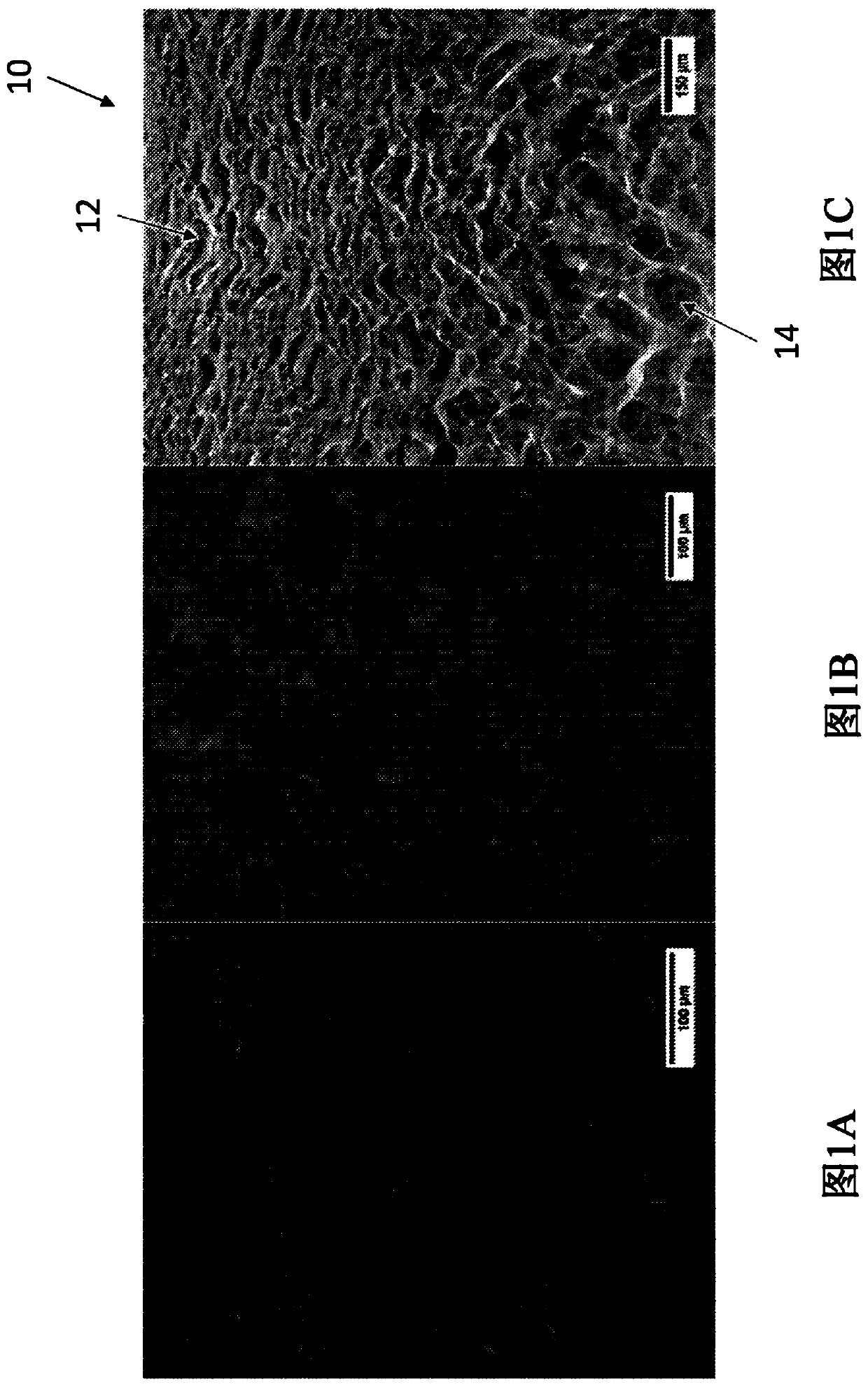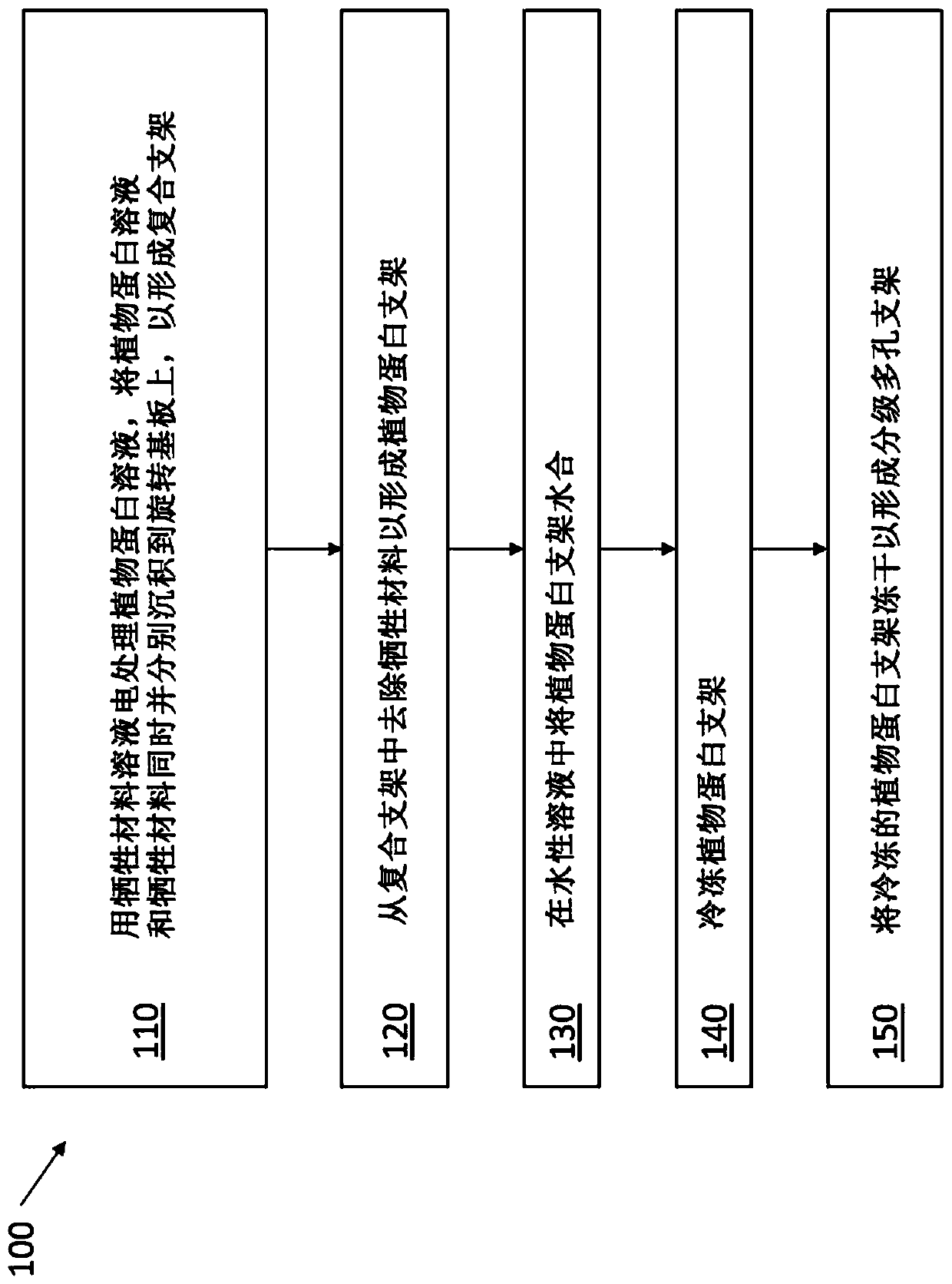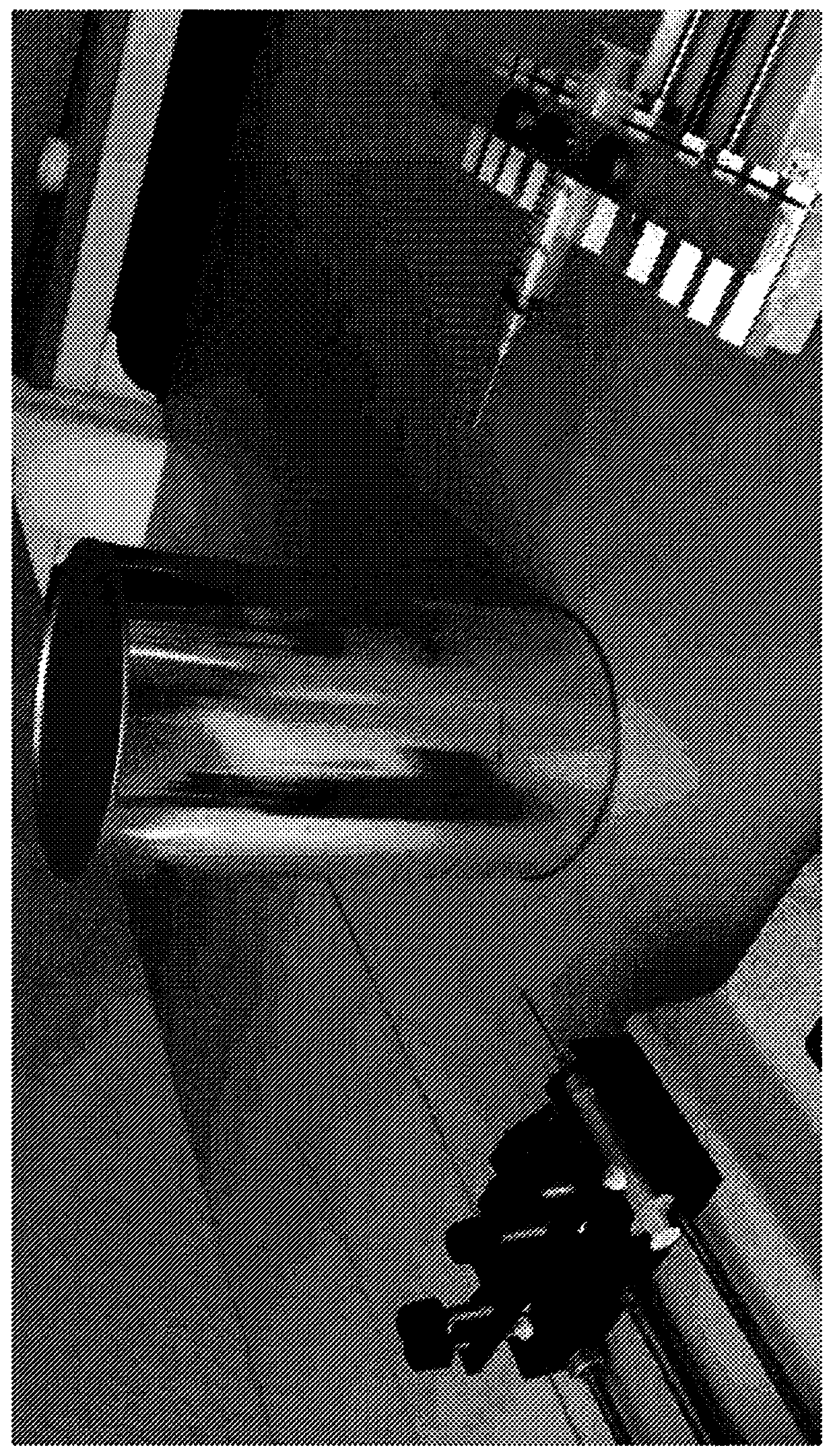Graded porous scaffolds as immunomodulatory wound patches
A technology of grading porous and porous materials, applied in the direction of non-active components of polymer compounds, prostheses, bandages, etc.
- Summary
- Abstract
- Description
- Claims
- Application Information
AI Technical Summary
Problems solved by technology
Method used
Image
Examples
Embodiment 1
[0093] Example 1: Graded Hydration Lyophilized (GHL) Scaffold
[0094] The purpose of this study is to develop a fibrous scaffold with large enough pores to allow cells to penetrate into the depth of the scaffold, which is reported to initiate / promote the phenotype of macrophages to switch to the tissue remodeling M2 phenotype and thereby enhance regeneration Wound healing (Garg K et al., Biomaterials 34.18(2013): 4439-4451; Wang Z et al., Biomaterials 35.22(2014): 5700-5710; Sussman EM et al., Annals of biomedicalengineering 42.7(2014): 1508-1516).
[0095] The main component of the fibrous scaffold is purified soy protein isolate (SPI), which is a paradigmatic biocompatible biomaterial that has been shown to allow cells to attach, diffuse and proliferate in vitro (LinL et al. , Journal of tissue engineering and regenerative medicine 7.12(2013):994-1008). The sacrificial component of the stent is polyethylene oxide (PEO), which is a cheap polymer compound, easily available and...
PUM
| Property | Measurement | Unit |
|---|---|---|
| diameter | aaaaa | aaaaa |
| thickness | aaaaa | aaaaa |
| diameter | aaaaa | aaaaa |
Abstract
Description
Claims
Application Information
 Login to View More
Login to View More - R&D
- Intellectual Property
- Life Sciences
- Materials
- Tech Scout
- Unparalleled Data Quality
- Higher Quality Content
- 60% Fewer Hallucinations
Browse by: Latest US Patents, China's latest patents, Technical Efficacy Thesaurus, Application Domain, Technology Topic, Popular Technical Reports.
© 2025 PatSnap. All rights reserved.Legal|Privacy policy|Modern Slavery Act Transparency Statement|Sitemap|About US| Contact US: help@patsnap.com



